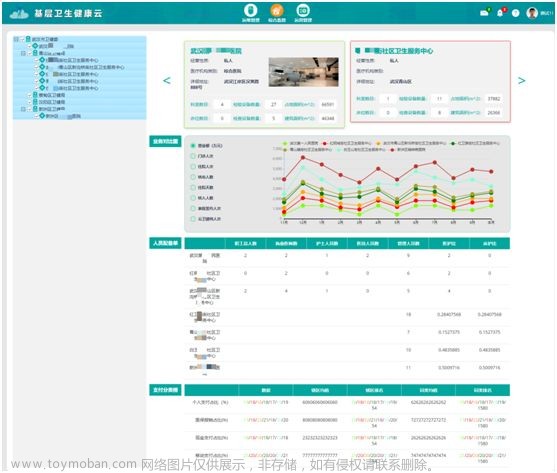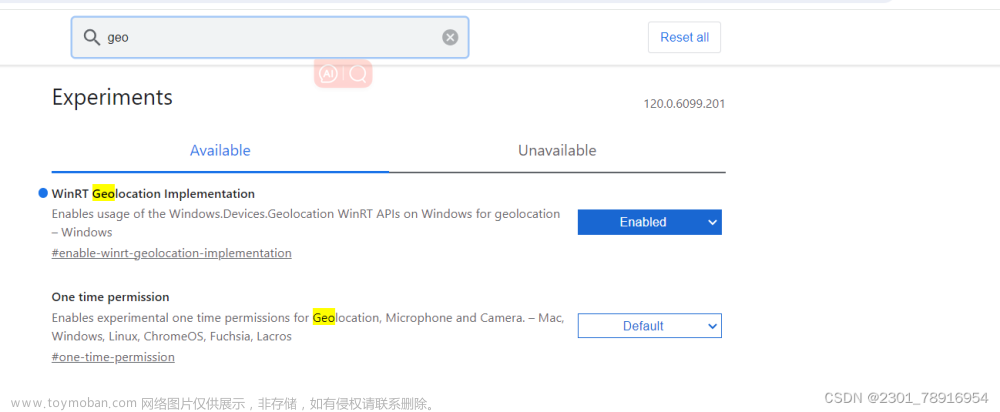1.resetTestEnvironment 是 Angular 测试中的一个函数,用于重置测试环境。它通常与 initTestEnvironment 和 platformBrowserDynamicTesting 一起使用,以确保在多个测试套件之间正确清理和重置 Angular 测试环境。
这是 resetTestEnvironment 函数的形式:
import { resetTestEnvironment } from '@angular/core/testing';
// 重置测试环境
resetTestEnvironment();
在一些测试场景中,特别是在使用 Angular 测试工具时,可能需要在多个测试套件之间重置测试环境,以确保每个测试套件之间的隔离性。resetTestEnvironment 函数用于执行这个重置操作。
通常的使用示例如下:
import { TestBed } from '@angular/core/testing';
import { initTestEnvironment } from '@angular/platform-browser/testing';
import { platformBrowserDynamicTesting } from '@angular/platform-browser-dynamic/testing';
import { resetTestEnvironment } from '@angular/core/testing';
// 在第一个测试套件中初始化测试环境
initTestEnvironment(BrowserModule, platformBrowserDynamicTesting());
// 在第一个测试套件中配置测试模块并执行测试
TestBed.configureTestingModule({
declarations: [YourComponent],
providers: [YourService],
});
it('should do something in the first suite', () => {
// 在这里执行第一个测试套件的测试代码
});
// 重置测试环境,准备执行第二个测试套件
resetTestEnvironment();
// 在第二个测试套件中初始化测试环境
initTestEnvironment(BrowserModule, platformBrowserDynamicTesting());
// 在第二个测试套件中配置测试模块并执行测试
TestBed.configureTestingModule({
declarations: [AnotherComponent],
providers: [AnotherService],
});
it('should do something in the second suite', () => {
// 在这里执行第二个测试套件的测试代码
});
在上述示例中,resetTestEnvironment 函数用于重置测试环境,以便在多个测试套件之间确保隔离性。然后,你可以使用 initTestEnvironment 重新初始化测试环境,以准备执行下一个测试套件。
这对于确保不同测试套件之间的测试环境隔离非常有用,并且可以避免测试之间的干扰。
2.configureTestingModule 是 Angular 测试中的一个函数,它用于配置 Angular 测试模块(TestBed)的选项和设置。这个函数通常在测试文件中使用,以便为测试提供所需的 Angular 模块和配置。
以下是 configureTestingModule 函数的一般形式:
import { configureTestingModule } from '@angular/core/testing';
// 配置测试模块
configureTestingModule({
declarations: [], // 声明组件
imports: [], // 导入其他模块
providers: [], // 提供服务
schemas: [], // 定义模式(例如,CUSTOM_ELEMENTS_SCHEMA)
aotSummaries: {}, // 预编译摘要
});
使用示例:
import { TestBed } from '@angular/core/testing';
import { configureTestingModule } from '@angular/core/testing';
// 配置测试模块
configureTestingModule({
declarations: [YourComponent], // 声明要测试的组件
imports: [YourModule], // 导入相关的模块
providers: [YourService], // 提供服务
schemas: [], // 定义模式,例如 CUSTOM_ELEMENTS_SCHEMA
aotSummaries: {}, // 预编译摘要
});
// 执行测试
it('should do something', () => {
// 在这里执行测试代码
});
在上述示例中,configureTestingModule 函数用于配置测试模块的各种选项,包括声明要测试的组件、导入其他模块、提供服务、定义模式等。这些配置选项将影响测试模块的行为,以确保测试环境适合特定的测试需求。
一旦使用 configureTestingModule 配置了测试模块,你可以在测试中使用 TestBed.configureTestingModule 来设置测试环境,然后执行你的测试代码。这有助于确保测试环境的正确设置,以便进行单元测试。
3.compileComponents 是 Angular 测试中的一个函数,用于编译测试组件的模板。在 Angular 测试中,当你测试一个组件时,需要首先编译该组件的模板,以便能够进行视图相关的断言。
以下是 compileComponents 函数的一般形式:
import { ComponentFixture, TestBed } from '@angular/core/testing';
// 编译组件的模板
TestBed.configureTestingModule({
declarations: [YourComponent], // 声明要测试的组件
}).compileComponents();
使用示例:
import { ComponentFixture, TestBed } from '@angular/core/testing';
// 配置测试模块并编译组件模板
beforeEach(() => {
TestBed.configureTestingModule({
declarations: [YourComponent], // 声明要测试的组件
}).compileComponents();
});
// 执行测试
it('should do something', () => {
// 创建组件实例
const fixture = TestBed.createComponent(YourComponent);
const component = fixture.componentInstance;
// 进行测试断言
// ...
});
在上述示例中,compileComponents 函数用于编译测试模块中声明的组件的模板。在测试之前,你需要首先配置测试模块(使用 TestBed.configureTestingModule),然后调用 compileComponents,以确保组件的模板已被正确编译。
一旦组件的模板已被编译,你可以使用 TestBed.createComponent 创建组件的实例,然后进行测试断言。这个过程是 Angular 单元测试的常见流程,用于测试组件的行为和视图。
insertRootElement 是 Angular 测试中的一个函数,用于将一个根元素插入到测试的 DOM 中。通常,这个函数用于创建 Angular 组件的测试环境,以确保测试代码可以在测试 DOM 中正确渲染和操作组件。
以下是 insertRootElement 函数的一般形式:
import { insertRootElement } from '@angular/platform-browser/testing';
// 将根元素插入到测试 DOM 中
insertRootElement();
使用示例:
import { ComponentFixture, TestBed } from '@angular/core/testing';
import { insertRootElement } from '@angular/platform-browser/testing';
import { YourComponent } from './your-component'; // 假设存在 YourComponent
it('should test a component with insertRootElement', () => {
// 将根元素插入到测试 DOM 中
insertRootElement();
// 创建组件实例
const fixture = TestBed.createComponent(YourComponent);
const component = fixture.componentInstance;
// 进行测试断言
// ...
});
在上述示例中,insertRootElement 函数用于将一个根元素插入到测试的 DOM 中。然后,你可以使用 TestBed.createComponent 来创建组件的实例,以便在测试中操作和断言组件的行为和视图。
这个函数通常在测试需要访问 Angular 组件的 DOM 元素时使用,以确保测试环境中存在正确的根元素。这有助于模拟 Angular 应用程序的实际渲染环境,以进行组件的集成测试。
removeAllRootElements 是 Angular 测试中的一个函数,用于从测试的 DOM 中移除所有根元素。通常,这个函数用于清理测试环境,以确保在测试之间保持环境的隔离
以下是 removeAllRootElements 函数的一般形式:
import { removeAllRootElements } from '@angular/platform-browser/testing';
// 从测试 DOM 中移除所有根元素
removeAllRootElements();
使用示例:
import { TestBed } from '@angular/core/testing';
import { removeAllRootElements } from '@angular/platform-browser/testing';
import { YourComponent } from './your-component'; // 假设存在 YourComponent
it('should test a component and clean up root elements', () => {
// 创建组件实例
const fixture = TestBed.createComponent(YourComponent);
const component = fixture.componentInstance;
// 进行测试断言
// ...
// 从测试 DOM 中移除所有根元素,以确保环境的隔离
removeAllRootElements();
});
在上述示例中,removeAllRootElements 函数用于从测试的 DOM 中移除所有根元素。这通常在测试结束后用于清理测试环境,以确保不同测试之间的环境隔离。
这对于确保测试环境的干净和隔离非常有用,以防止测试之间的干扰。
6.waitForAsync 是 Angular 测试中的一个辅助函数,用于处理异步测试。它允许你编写测试代码,等待异步操作完成后再进行断言,而无需手动管理异步操作的处理。
以下是 waitForAsync 函数的一般形式:
import { waitForAsync } from '@angular/core/testing';
// 使用 waitForAsync 包装测试函数
it('should perform an asynchronous task', waitForAsync(() => {
// 在这里编写包含异步操作的测试代码
// 使用 Angular 的异步测试工具(例如 fakeAsync 和 tick)等待异步操作完成
}));
使用示例:
import { ComponentFixture, TestBed, waitForAsync } from '@angular/core/testing';
import { YourService } from './your-service'; // 假设存在 YourService
it('should test an asynchronous service', waitForAsync(() => {
// 使用 waitForAsync 包装测试函数以处理异步操作
const fixture = TestBed.createComponent(YourComponent);
const component = fixture.componentInstance;
const yourService = TestBed.inject(YourService);
// 调用服务的异步方法
const asyncResult = yourService.doSomethingAsync();
// 使用 Angular 的异步测试工具(例如 fakeAsync 和 tick)等待异步操作完成
fixture.detectChanges();
fixture.whenStable().then(() => {
// 进行测试断言
expect(asyncResult).toBe('expectedResult');
});
}));
在上述示例中,waitForAsync 函数用于包装测试函数,以处理异步操作。在测试函数内部,你可以执行包含异步操作的测试代码。然后,使用 Angular 的异步测试工具(例如 whenStable)等待异步操作完成,以便进行断言。文章来源:https://www.toymoban.com/news/detail-699558.html
waitForAsync 有助于确保在进行断言之前等待异步操作的完成,使测试更可靠和稳定。这对于测试需要处理异步操作的情况非常有用,例如测试 Angular 服务的异步方法。文章来源地址https://www.toymoban.com/news/detail-699558.html
到了这里,关于angular测试API的文章就介绍完了。如果您还想了解更多内容,请在右上角搜索TOY模板网以前的文章或继续浏览下面的相关文章,希望大家以后多多支持TOY模板网!













